The Northern Plains include what is now North and South Dakota, Eastern Montana, northeastern Wyoming, and the Canadian provinces of Alberta and Saskatchewan. The tipi—a conical lodge—has become the stereotype for all Indian housing. On the Northern Plains, Indian people found the tipi to be a comfortable home, one which was easily moved, and one which could withstand the winds that blow across the Plains.
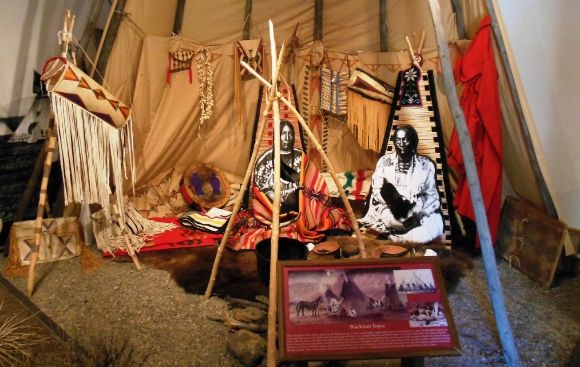 Shown above is the inside of a Blackfoot tipi on display in Fort Benton.
Shown above is the inside of a Blackfoot tipi on display in Fort Benton. 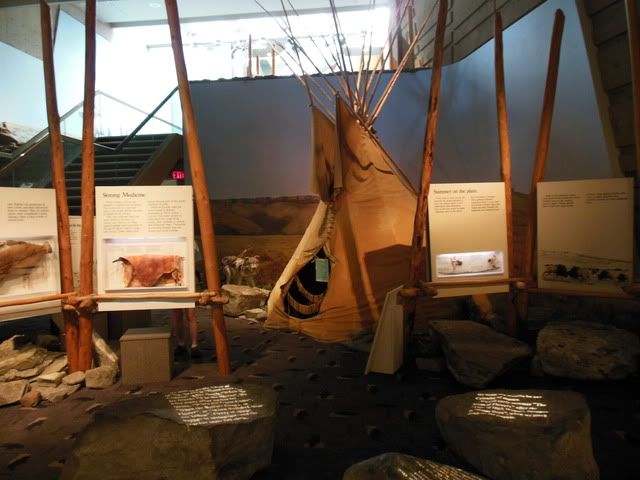 Shown above is a smaller, pre-horse tipi on display at the Head-Smashed in Buffalo Jump in Canada.
Shown above is a smaller, pre-horse tipi on display at the Head-Smashed in Buffalo Jump in Canada. 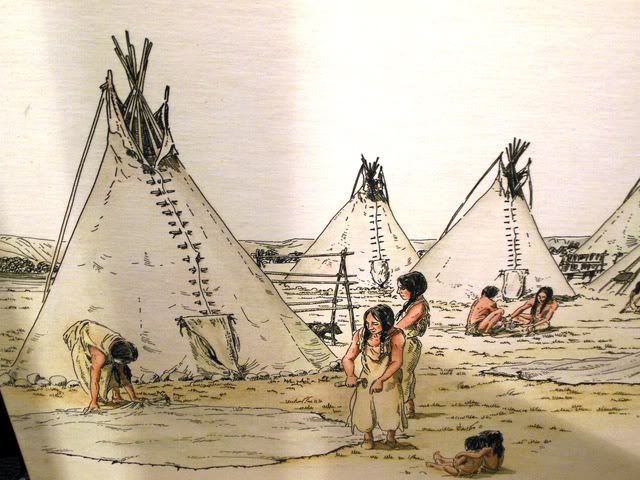 Artist’s concept of Blackfoot tipis at the Head-Smashed-In Buffalo Jump.
Artist’s concept of Blackfoot tipis at the Head-Smashed-In Buffalo Jump. 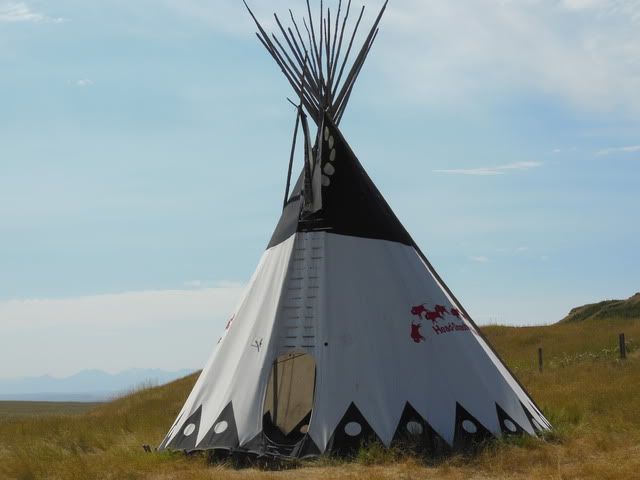 A modern Blackfoot tipi.
A modern Blackfoot tipi. 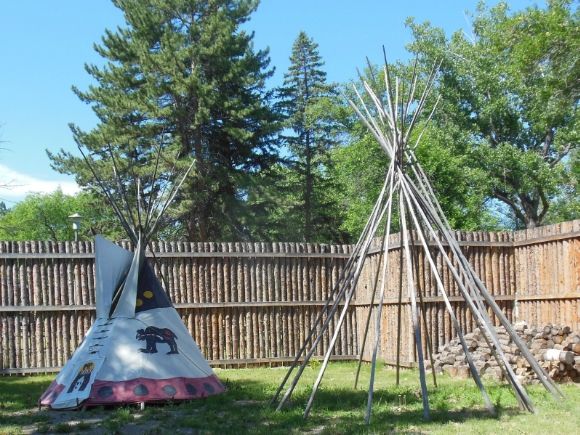 Tipi and tipi frame at Fort Benton.
Tipi and tipi frame at Fort Benton. 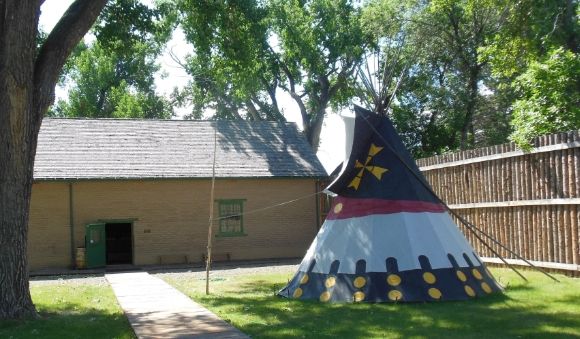 Tipi at Fort Benton.
Tipi at Fort Benton.
Traditionally, the covering of a plains tipi was made from 20 to 25 buffalo hides which had been sewn together. This cover weighed more than a hundred pounds. The covering was held up with a frame of poles: 16-20 poles which were at least 20 feet long. The lodges were usually put up and taken down by a group of women working together. The women could put up or take down a lodge in about half an hour.
Among the Blackfoot, some individuals have tipis – called Nii-toy-yis – which are painted with symbolic decorations. Blackfoot elder Long Standing Bear Chief, in an article in Spirit Talk News, said:
“When designs and symbols appear on the covering, then it is referred to as a painted lodge. When it is painted it is a special sacred place, because the designs mean that it is the result of some person’s dream or vision.”
The designs painted on the tipis were owned—in modern terminology, they were intellectual property—and therefore could not be copied. In a chapter in Science and Native American Communities: Legacies of Pain, Visions of Promise, Reggie Crowshoe explains:
“Designs were very important as an expression of clan and society membership and because of that, of rights and duties within the community. As a result, they were regulated, and nobody could own somebody else’s design without going through an official purchase and a transfer ceremony.”
In his 1923 book Old Indian Trails, photographer Walter McClintock writes:
“Each Painted Teepee had a sacred bundle and a separate ceremony. The pictures on the tepee cover and the ceremony that went with them could not be separated. They came originally through a dream and belonged exclusively to the founder, who might transfer them to another; but no one could copy them.”
Walter McClintock, in his booklet Painted Tipis and Picture-Writing of the Blackfoot Indians, also writes:
“A decorated tipi was in itself an announcement that within rested a sacred bundle whose owner possessed the ritual associated with it. Both men and women made vows to these tipis in time of danger and in behalf of the sick.”
Photographer Edward Curtis, in the book Prayer to the Great Mystery: The Uncollected Writings and Photography of Edward S. Curtis,writes:
“A distinctive feature of the Piegan lodge was the characteristic decoration of the inner lining. They often painted their lodges to indicate either the coups of the owner, his medicine, or both.”
Some of the Northern Plains tribes used a four-pole base for constructing their tipis while others used a three-pole base. Among the Cheyenne and Arapaho, the first pole of the three-pole base is oriented toward the east, the second to the south, and the third to the north. Other poles are then added in a clockwise fashion. The last pole, which is oriented to the west, is then used to raise the cover onto the framework of poles.
The Assiniboine used a three-pole tipi which averaged about 31 feet in circumference and required 12 hides for a cover. Assiniboine lodges always faced south. The lodges were owned by the women and were set up by them. The tipi was occupied by a nuclear family along with some other relatives, such as a widowed grandmother. Sometimes the Assiniboine lodges were painted with pictures of the war honors of the man who lived there.
The Cree also used a three-pole tipi base. Additional poles would be laid against the three-pole foundation in a counter-clockwise fashion. The total number of poles used in the tipi frame varied with the size of the structure. Among the Cree, the tipi was owned by the woman and set up by the woman. If a man wanted to paint a picture of his spirit helper on the tipi cover, he had to obtain the consent of his wife.
During the winter, grass would be placed between the wall covering and the tipi covering to provide for additional insulation. In the summer, the bottom of the tipi was rolled up to about two feet above ground to provide a cooling breeze.
Among the Cheyenne, the floor of the tipi in the permanent winter camp would be excavated four to five inches, leaving a sod bench around the outer portion which served as a foundation for their beds. The beds were made with a raised platform and high backrest.
Among the Lakota, the tipis in a formal camp were placed in a circle around a space called hocaka which had an entrance facing the rising sun. All formal entry to the camp was through this space. A body of men entering the camp through any other entrance were considered hostile.
The formal Lakota camps were generally summer camps. All of the tipi doorways would face the center of the circle except for those on either side of the entryway which would face east. The lodge of the leading chief was placed to the west of the circle. As a council lodge, a double tipi would be set up in the center of the circle.
In an informal Lakota camp, the tipis were spread out in lineal fashion with the tipis spread out along the banks of a creek or river. The informal camps were generally winter camps and were located in bottom areas where there was wood and protection from the wind and drifting snow.
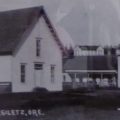
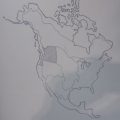
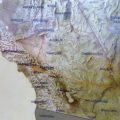
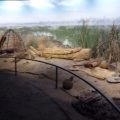
Leave a Reply